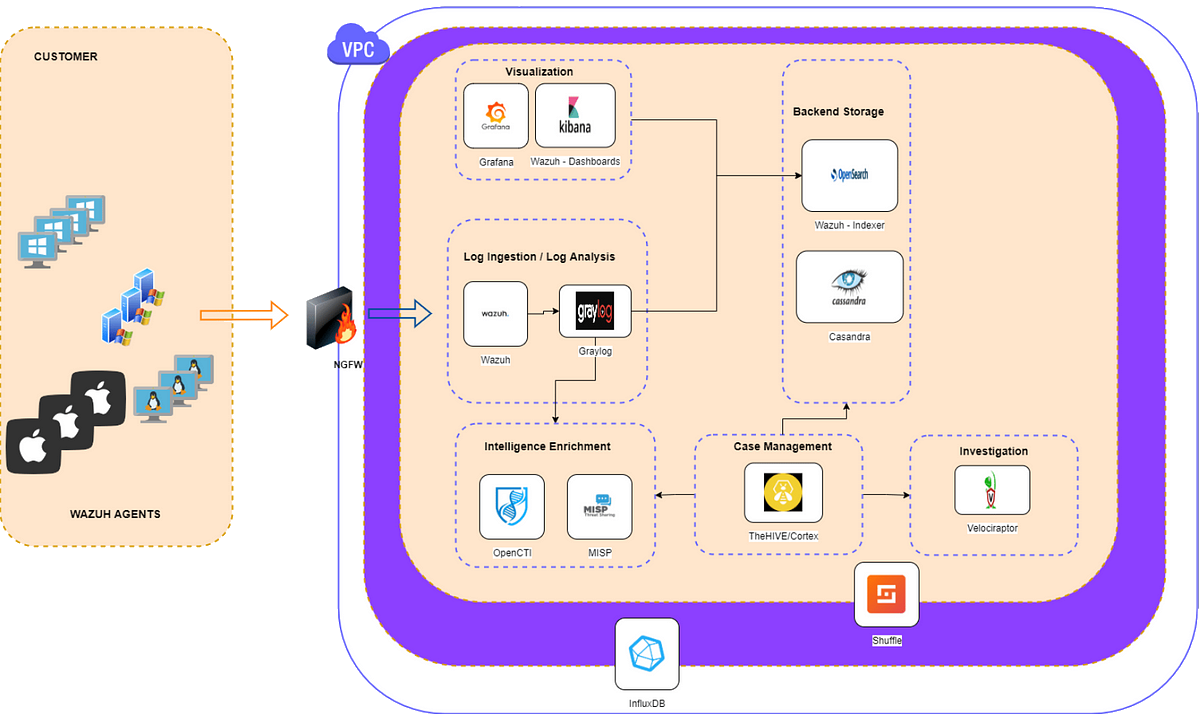SIEM stack
Security information and event management (SIEM) is an approach to security management that combines security information management (SIM) and security event management (SEM) functions into one security management system.
It is a software solution that aggregates and analyses activity from many different resources across an IT infrastructure. SIEM collects security data from network devices, servers, domain controllers, etc., and search queries can be done to look for specific answers from ingested logs.
Tools and architecture
Many SIEM tools exist, Kibana, Splunk, Elastic SIEM, Datadog, QRadar, UnderDefense, etc., and architecture varies. In general, if a tool has a SIEM engine, it contains three components:
A data collector forwarding selected audit logs from a host (agent based or host based log streaming into index and aggregation point)
An aggregation point for parsing, correlation, and data normalisation.
A search node used for visualisation, queries, reports, and alerts (actual analysis takes place on a search node)
SIEM stack requirements
Log ingestion
Collect logs originating on endpoint devices, network devices, or 3rd party services
Normalise log fields to universal names for faster searching and better visualisations
Ensure caching of logs if backend storage is busy or offline
Ability to ingest mobile logs
Log analysis
Analyse logs from endpoints/services
Determine the severity of logs ingested via log analysis
Ability to discard noisy alerts to limit overflow of unnecessary data
Backend storage
Store received logs for a period of time
Fast searching and viewing of data
Ability to provide access control to stored logs
Visualisation
Ability to view logs via widgets
Fast searching and viewing of data
Support the ability to read from multiple log storages (Elastic, MySQL, …)
Intelligence enrichment
Enrich received log with threat intelligence gathered from various providers
Ability to parse and store selected responses so that only crucial data is stored
Automated, so that SOC analysts are not having to manually attempt to enrich logs
Case management
Platform to view and react to high severity events
Allow collaboration with multiple SOC analysts
Allow responsive actions so that analysts can trigger events on their endpoints (escalation procedure)
Automate
SOAR platform
Ability to automate workflows in response to critical alerts, failed health checks, or ticket analysis
Fully customisable, and fast
Investigation
Incident response
Quarantine a device
Ability to remotely collect endpoint forensics
Health monitoring
Monitor resources consumed on endpoints
Monitor services/process whose stoppage would cause operational impact
Ability to alert in real-time when health check thresholds are met
Testlab
Gradually building up to something useful for the IPA project:
Wazuh
Wazuh single-node deployment with docker, bare-bones single-node deployment: One Wazuh manager, indexer, and dashboard node.
Wazuh multi-node deployment with docker, two Wazuh manager nodes (one master and one worker), three Wazuh indexer nodes, and a Wazuh dashboard node.
Testlab
SIEM stack All tools in these stacks are open source and free.
